NO SELF-RESPECTING writer should ever undertake the process of making a list lightly. As we all know, lists are ultimately trivial, subjective and practically a provocation inviting rebuttals, questions and caustic dismissal. They are, therefore, matters of life and death. Making this list made me (more) insane, so I know my mission is accomplished, in spirit if not actuality. Even picking the title caused consternation: some people will know and love all of these albums; all people will love and know some of them. The point, simply, is to celebrate fifty that I don’t think get enough love, and that I recommend without reservation. That said, this is not an exercise in obscurity: we already have hipsters happy to select the most abstruse or impossible-to-procure albums. In the cases where I allow for works I know a lot of people recognize, I’ve included them because in my experience, not nearly enough people seem to own them (spoiler alert: the top two selections are critically regarded masterpieces, but in my humble opinion they should be a great deal more beloved and recognized).
I enforced a few guidelines to make the project manageable: there is exactly one blues album, one classical, one “world music”, one country/bluegrass, one soundtrack and one jazz (but I broke that rule, inevitably): entire lists could—and should—be made of each genre, and I tried to limit the reggae, because an entire list is begging to be made at some point. There are more than a few albums on this list that I heard or read about and all music fanatics understand the karmic implications of turning friends and strangers on to albums that improve their lives. Getting off the familiar path always is always a word-of-mouth enterprise, so I thank everyone in advance for mentioning lesser known albums that warrant celebration in the comments section.
Let’s get it on.
50. Robert Johnson: The Complete Recordings
Yes, everyone has heard of him. But have you heard this music? Do you own his collected works? They fit on one disc, so there’s no acceptable excuse not to.
Does any single figure loom as large over an art form as Robert Johnson? Bach and Shakespeare come to mind, but classical music, like literature, took centuries and multiple cultures in order to unfold and evolve. The history of American popular music came to be dominated by rock and roll, which initially flowered as a (mostly white) appropriation of the blues. The blues was the common language and unifying force of all rock’s earliest practitioners, many of whom were obsessed with the music made in the first part of the 20th century. It’s well documented that most of the artists from what came to be called the British Invasion were inspired and driven by the example of blues legends like Muddy Waters and Howlin’ Wolf. Put simply, the one individual who even those masters must be measured against, in terms of influence and innovation, is Robert Johnson.
Perhaps the most effective way of getting a handle on Johnson’s unshakable impact is to consider the number of his songs covered by other musicians. Even a listener more than casually acquainted with rock (and blues) history is likely to underestimate how many compositions—popularized by other rock (and blues) musicians spanning several decades—were originally written and recorded by Johnson over the course of a mere seven months in 1936 and 1937. And as anyone who knows can attest, this is not remotely music for a museum, relics to acknowledge before moving on. It is exciting, joyful noise, brimming with purpose and ingenuity, fun and frightening, enigmatic and awe-inspiring.
In sum, if you consider yourself a fan of history, or culture, or America, or Art (etc.), you need this in your collection, and not as something to put on display, but something you will return to, often, to remember how deep, dark and mind-boggling humanity can be, at its best.
49. Olivier Messiaen: Quartet for the End of Time
Quatuor pour la fin du temps (Quartet for the End of Time), is a chamber quartet by French composer Olivier Messiaen. This music was not merely inspired by the concentration camps, it was written, and then performed there. True story, and worth looking up. When considering the circumstances that accompanied its creation, the hyperbolic title not only seems appropriate but even inadequate. The music itself? Exactly what you might expect: stirring, solemn, celebratory. It is a living document of endurance and memory, and it is the soundtrack of a hope that can never be silenced.
48. Charles Mingus: Mingus Ah Um
One of the most special aspects of Mingus Ah Um is the way it functions as a sort of encyclopedia of the best jazz music recorded to that point. Mingus was as generous in celebrating the musicians who inspired him as he was ardent in discovering them. Plain and simple, Mingus Ah Um sounds like the 20th Century: it is a self-portrait of a man who helped define the direction of post-bop jazz, commenting on the country that created him. Charles Mingus was, above all things, a fighter. Since nothing came easily to him, his struggles—as a musician, as a man—acted as the kiln in which his character was forged. This is how Mingus, mercurial and larger than life, manages to encapsulate so many aspects of the American story: he battled to find his artistic voice, then he strived—often stymied by rejection or indifference—to have that voice heard. Eventually, inevitably, he managed to create material that was too brilliant to be ignored.
47. Bela Fleck: Natural Bridge
It’s possible there is not a more maligned or misunderstood type of music than bluegrass. Banjo wizard Bela Fleck is probably the best-known practitioner of what is commonly referred to as “Newgrass” (progressive bluegrass). His credentials are unimpeachable, and his entire discography is consistently remarkable, but Natural Bridge stands out as a document that can entice a newbie and satisfy an aficionado. Pushing boundaries and styles, the results are buoyant and expressive, a tour de force of collective musicianship: every song is hummable and manages to sound familiar yet fresh on first listen. It’s difficult to imagine anyone with a remotely open mind being immune to the considerable charms on display, and it’s likely this could be a gateway to a love affair that never ends.
46. Ali Farka Toure and Toumani Diabate: Ali & Toumani
Although Mali legend Ali Farka Touré was taken entirely too soon (despite having lived a long and productive life, artistically and spiritually) in 2006 after battling cancer, this posthumous release, his second collaboration with kora master Toumani Diabete, is an ideal summation of his work and perfect point of entry for newcomers. The interplay between these two men is exceedingly rare in any type of music. Ali and Toumani is profound and powerful, with a soft accumulating force, like the individual drips of ice that form a river. This desert music is very much like the desert itself: it is expansive and immutable, and it will endure.
45. Mikey Dread: Beyond World War III
If Mikey Dread (Michael Campbell) had never decided to pick up the microphone and sing, his status would be secure in reggae history. His groundbreaking weekly show on Jamaican radio, the ingeniously entitled Dread at the Controls not only made him a celebrity, but it brought Jamaican music to the masses, making hometown heroes out of otherwise obscure acts (And then there is his fruitful, crucial association with The Clash: keyword Sandinista!).
This is one of the true lost classics. No, that’s not accurate. It’s more accurate to remember that it was never considered a classic in the first place, so it’s not a matter of it being lost so much as never having been found. And that is unacceptable. The style here is heavy dub, with Dread (who, again, already had plenty of experience perfecting mash-ups of reggae hits) applying his considerable production acumen to his own songs. The mood is mostly upbeat, at times festive, at times jovial and, when appropriate, somber. This is party music for the apocalypse.
44. Elysian Fields: Bleed Your Cedar
This album should have made the beautiful Jennifer Charles a superstar. That it didn’t says more about our country, and its tastemakers, than it does about Elysian Fields. The songwriting and guitar playing of Oren Bloedow is effulgent throughout, and the album manages to be spooky and luminous at the same time. Centerpiece “Fountains on Fire” is sexy yet forbidding: Charles is a siren who will lull you to sleep and then steal your soul. Other tracks like “Jack In The Box” and “Anything You Like” have unmistakable noir elements while delivering the adrenaline. This is lounge music from hell, sung by an angel.
43. Robert Fripp and Brian Eno: No Pussyfooting
The origin of ambient? If not, definitely one of the early, and more enduring experiments that led to thousands of lifeless imitations. Considering the pedigrees of both men (long since anointed as legends) it’s almost impossible to imagine this not being brilliant, but recalling the relatively primitive conditions in which it was recorded, No Pussyfooting remains a revelation. Considering Fripp was in the midst of recording masterpieces with King Crimson’s most riotous ensemble and Eno was fresh out of Roxy Music, the subdued, glacial pull of this album is the type of anomaly we now know we could—and should—have expected from these two geniuses. In addition to being a remarkable recording in its own right, this can also be seen as a template for the types of sounds Eno and Fripp are still experimenting with, four decades later.
42. Wax Poetic: Nublu Sessions
Yes, this is the one that has Norah Jones on it. And I’m grateful for two reasons. First, even though Jones sings on only two tracks, they are both top-notch. Second, her involvement in this project clearly elevated its commercial appeal and helped more people stumble upon it. Nublu Sessions features a variety of guest vocalists, all to incredible effect. In addition to Jones, we get N’Dea Davenport, U-Roy and especially Marla Turner, whose vocals are some of the sexiest and most memorable of the last decade. Turner’s work on “Della” is an instant classic that invokes Motown filtered through a psychedelic jukebox: it is an ethereal Burt Bacharach song, equal parts Dionne Warwick, Isaac Hayes and Portishead. Nublu Sessions effortlessly meshes jazz, rock and pop, and is everything that great music is capable of being. Do yourself a favor and grab hold of this.
41. Cornershop: Handcream for a Generation
It seemed too good to be true that this band became one of the big stories in 1997 with their breakthrough When I Was Born For The 7th Time. In a way, it was. Whether because of pressure (self-imposed and critical) or lack of sufficient inspiration, it took them over five years to make their next album. With America’s typical attention span, that meant they were not only mostly forgotten, but effectively yesterday’s news. It’s a shame, then, that this atmosphere (partly of their own making) led to the apathetic embrace of 2002′s brilliant Handcream For A Generation. It’s difficult to pinpoint exactly why this album was (and continues to be) met with such indifference. Certainly, it doesn’t have the sure-fire hit single that “Brimful of Asha” was, but in many ways, the best songs on this album are better than the best songs on the one that preceded it.
In any event, it is one that remains ripe for reeavaluation, and the delights it contains are considerable. Put as simply as possible, anyone who dug When I Was Born For The 7th Time is strongly encouraged to snatch Handcream For A Generation. Cornershop’s inimitable Indian/British rock permutations are consistently clever, inventive and always, always cool as shit. This is one of the coolest albums of the new century and, in fact, it may be too cool for its own good. For skeptics or naysayers, how can you possibly go wrong with a record that has a song entitled “Lessons Learned from Rocky I to Rocky III”? This is intelligent music that makes you want to dance, laugh, and marvel at how such creativity is conceived in the first place.
40. Aram Bajakian: There Were Flowers Also in Hell
Who is Aram Bajakian? He’s been on the road with both Lou Reed (RIP) and Diana Krall. Let me repeat that: he has played guitar with both Lou Reed and Diana Krall. Quick, how many musicians do you know who are versatile enough to pull that off? It speaks volumes to hear Sweet Lou introduce Bajakian as “guitarist extraordinaire” in of the many, highly recommended clips available on YouTube.
There Were Flowers Also In Hell is a testament of Bajakian’s love affair with his instrument. The inspirations he has absorbed infuse practically every second of this recording, but the sum total is anything but reductive. This album contains multitudes, and they are original as they are exhilarating. This is not jazz, nor is it necessarily rock or blues; it’s a reflection of the mind and soul of the man who made it, like all great art must be. As such, it is also a reflection of the frenzied times we live in: the turmoil, apathy and information overload, yet it prevails as an antidote for the very urgencies it addresses.
39. Secret Chiefs 3: Book M
A lot of people worried way too much about whether or not Mr. Bungle would ever make another album after California (I know, I was one of them). Little did we know that if they had, we may never have gotten Tomahawk, or the resurgence of Secret Chiefs 3. Who? Exactly.
To put it simply, Secret Chiefs 3 are the “other” guys from Mr. Bungle. But to say that Secret Chiefs 3 are Mr. Bungle without the vocals does not even come close to describing them, or doing their remarkable music the slightest justice. On the other hand, trying to get a handle on their sound is hopeless, and I mean that in a good way. They blend a sort of surf-thrash guitar (courtesy of mastermind Trey Spruance) but remain grounded in a narcotic jazz groove (thanks to bassist and composer Trevor Dunn), with a distinctly Eastern (think Indian meets Bollywood in a cloud of opium) influence, with a healthy dose of Morricone. And then throw in the sax and violin (the great Eyvind Kang) and quickly you realize that…we’re not in Kansas anymore. Of course, we never were. Obviously anyone who is familiar with Mr. Bungle or Fantomas should lap this up, but not to worry, if you’ve never heard of any of these acts, an album like Book M is capable of satisfying anyone with unlocked ears. It’s not eccentric for the sake of being eccentric; there is most definitely a very calculated (and complicated) method to this madness. And madness never felt so fresh and funky.
38. Dread Zeppelin: 5,000,000*
An Elvis impersonator doing Led Zeppelin covers to a reggae beat? What’s not to love? Sure, it’s a joke, but it’s dread serious. And of course if there was no musical talent, it would implode on its own petard. Probably an act best appreciated live, Dread Zeppelin manage to do the near-impossible: pull off irreverent covers of sacred classic rock that are not only original, but hysterical and enjoyable (if you recoil at the idea of the opening lines of “The Song Remains the Same” delivered thusly: “A well, a well I had a dream”, stay clear; otherwise—if you have a sense of humor and tolerance for absurd—you might be hooked at first hear). And this is coming from a Led Zeppelin freak. 5,000,000* is, for me, their most consistently rewarding work, and is worth owning just for the cover of Marley’s “Stir It Up” which features “Elvis” making a fast food order fit for The King.
37. Dr. John: Gris Gris
Most people have at least heard of Dr. John, and anyone who listened to the radio back when people listened to the radio knows his hit “Right Place, Wrong Time”. But to understand why Malcolm John “Mac” Rebennack, Jr. is a legend, this is the place to start. More, it’s the place to stop, because it all begins and ends here: nothing he’s done has been as comprehensive and inimitable as his debut.
Because of the era in which it was released, and the drugs clearly accompanying its creation, this masterpiece gets described (and/or diminished) as a “psychedelic” recording. It is, but it’s more. A lot more. For starters, Dr. John deserves eternal props for managing to invoke the deepest, secret south in an L.A. recording studio (in 1967!), and he brings a vision clearly guided by personal experience and belief. But what is it? It’s a thick, boiling gumbo full of chants, incantations, whispers and cries, animal noises, exotic—or, at least, unexpected—instruments (mandolin, harpsichord) and a surreal tension that is equal parts menacing and convivial. It’s a living document of an opaque, unspoken history: Gris Grisis, by turns, unsettling, intoxicating, eerie, bizarre and triumphant.
36. Scenic: Incident at Cima
When you can describe any piece of music entirely in clichés it’s either very good or very bad. Incident at Cima is very good. Ready? It’s the soundtrack to the best movie never made. It invokes a fast and aimless drive through the desert. It is like a peyote trip in sound. It is haunting. It is unlike anything you’ve ever heard. It will remind you of so many things you like about (insert artist here, starting with Ry Cooder). It rocks. It inspires contemplation. This is music that can—and should—accompany (insert activity here). It will cause you to consider the great musicians who helped inspire it, and the great music it has helped inspire. It will broaden your horizons, especially the ones you never knew you had. Et cetera.
35. Lloyd Miller: Lloyd Miller & Heliocentrics
I believe anyone willing to listen could be quickly convinced that their world was too small without this album. Not unlike the way a great novel, movie or even a new type of cuisine will remind you that there are places and times you were unaware of, and that someone—or something—else can transport you without the use of machines or magic (or even drugs). If, understandably, that sounds a tad too precious, this is music you can put on while you meditate, do yoga, think or have sex. So there’s that. Unforced and never formulaic, this music manages to be adventurous without descending into pretense or abrasiveness: it is reminiscent of far-away times and places, but ultimately situated contentedly in the here-and-now.
34. Egypt: Soul Hammer
One slight indulgence: I know this band because I often watched them live while attending George Mason University in the early ‘90s. But their inclusion is neither nostalgic nor sentimental; I still listen to their albums and this one remains a personal favorite. Indeed, I’ve long held a fantasy that in a parallel or at least proper universe, Egypt would have broken big and so many mediocrities from that era would remain minor acts. Put another way, Soul Hammer is exactly the album Lenny Kravitz has always wanted to make, only more so.
The guitar playing throughout is crushing yet nuanced, occasionally bordering on Alice in Chains level intensity and original, and the singing is superlative (comparisons to inexplicably wealthy acts are inevitable). Egypt may have been before their time, or utterly of their time—in a good way—and simply gotten lost in the grunge-laden hall of mirrors. This is the real deal: energy to spare, virtuosity in spades, stylistically versatile and more than a little menacing. Album centerpiece “Live Like That” (which features a lift-the-lighters guitar solo) could/should have been in heavy rotation on MTV, and still should find its way into an important scene in a great movie.
33. Miss Murgatroid & Petra Haden: Hearts & Daggers
A violin/accordion duo?Really?
Yes, really. This is likely the weirdest selection on this list, but it’s also one of the most wonderful. Petra Haden (daughter of jazz bassist Charlie Haden) already gets props for making one of the most adventurous and audacious albums of the new century, a totally a capella remake of The Who’s The Who Sell Out. (Seriously.) Suffice it to say, calling this type of music an acquired taste is more than a slight understatement.
So, Hearts and Daggers, Haden’s second collaboration with Miss Murgatroid (accordionist Alicia Rose) is at once totally out there, but also, refreshingly accessible. Think Beach Boys harmonizing (with female voices) set to slightly surreal classical chamber music. Naturally, there are a whole lot of people who won’t have the ears (or stomach) for this from the get-go, but for more adventurous (and, frankly, experienced) listeners, this is a treasure waiting to be dug up. The music invokes up a dreamlike state that is neither contemporary nor particularly western, yet it could only be made today: the result is highly stylized, utterly uncompromised magic.
32. Bohren & der Club of Gore: Black Earth
The band actually calls what they do “horror jazz” which is just about right. It could almost be a Saturday Night Live (think Sprockets) skit: the band is German, there are no vocals, and the titles of the songs include “Midnight Black Earth”, “Constant Fear”, “Destroying Angels” and “The Art of Coffins”. It seems like the biggest joke except for two things: it is so obviously non-commercial (ever heard of this band? I didn’t think so), and it’s a totally original triumph.
It is dark (real dark), it is slow (real slow) and it’s definitely not daytime music. In other words, it’s perfect! Seriously, this is an album to accompany late night ruminations, or the enjoyment of a solo scotch on the rocks, or an ideal soundtrack for drifting off to sleep. This is not an album that would necessarily be in heavy rotation (unless you are a guy who wears black eyeliner) but it is the ultimate go-to album for certain occasions that only you will know about.
31. Ennio Morricone: The Thing (Original Soundtrack)
Perfection is a word that should never be used lightly, but no other word will suffice for the wonders Ennio Morricone works, scoring this film. The name Morricone is—and should be—associated with brilliance, variety and superhuman productivity, just to pick a few obvious choices. While the list of only his very best efforts is not short, his work here must be considered amongst the top tier: The Thing would be unimaginable without it. Rather than overwhelming, or distracting the action on the screen—as film scores do with distressing regularity these days—Morricone’s music exists mostly on the periphery, in the corners and inside the shadows. Its effectiveness serves an almost opposite purpose to the handful of over-the-top alien transformations: the real horror of the story lies in the tension of not knowing, the dread of isolation and the fear of being assailed by an inexplicable enemy. Morricone subtly embellishes the otherwise silent scenes, where the only sounds are Antarctic winds, silence and darkness. As the paranoia increases, strings are plucked like raw nerves, while stark, almost soulless keyboard drones mirror the growing desperation: the music exists as a wind chill factor, making everything colder and more forlorn than it already is.
30. Santana: Caravanserai
Abraxas gets most of the recognition, even though Santana III is better. (The less said about Supernatural, the better.) Yet not enough people name-check Caravanserai, which is a shame since it’s not only Santana’s best album, it’s one of the great documents of a great decade. If you’ve heard their big hits on the radio (and who hasn’t?) it’s familiar yet also elusive. There is an unforced far-off vibe the band taps into, and from the first cricket chirps to the last frantic arpeggios, the listener is definitely in another place altogether. The playing throughout is so obviously in the service of a singular and uncompromised vision, it still sounds primitive and futuristic all at the same time.
29. Eyvind Kang: Theater of Mineral Nades
Eyvind Kang inhabits other worlds so that the rest of us don’t have to.
There are many ways to explain Eyvind Kang, but for the uninitiated, it may be helpful to describe him an artist who is inspired by and incorporates other times and foreign places, always interpreting history and humanity with the curiosity of an explorer and the delight of a devoted scholar. He manages to make strange and exquisite music, at once embracing improvisation yet always guided by central themes and feelings.
Theater of Mineral Nades manages to be all things at once: a history-of-the-universe as sonic experiment. In an ideal world Kang would be, if not a household name, an artist properly appreciated by a curious and discerning majority that did not depend upon network television to tell them whom they should idolize. No matter. By continuing to depict forgotten as well as imagined worlds, Eyvind Kang manages to tell us new things about the one in which we dwell.
28. New Zion Trio: Fight Against Babylon
As a player equally comfortable behind a piano or an organ (as well as keyboards of any kind), Jamie Saft has delivered convincing performances as an acoustic player as well as one who happily plugs in. At times sounding like Klezmer meets King Tubby, this joint is heavy without being dark, and ever-so-slightly unsettling. Saft achieves the improbable: a radical deconstruction and re-imagining of the classic Dub it up blacker than Dread aesthetic perfected by Lee “Scratch” Perry in the mid-to-late ‘70s.
Capable of seemingly anything, Saft shrewdly utilizes a less-is-more approach to create a music that no one else could have conceived. He boasts the full range of his influences and ability, summoning sounds and feelings from multiple genres. The results are strikingly original and may inspire you to dig up some dub classics from your closet, or listen to contemporary jazz with reawakened ears. They should also remind you that while Saft has never before done anything quite like this, Fight Against Babylon is an obvious and welcome continuation of the distinctive and unclassifiable work he has been doing for many years now.
27. Danny Gatton: 88 Elmira Street
The best guitarist too many people are unaware of, Danny Gatton blended unparalleled musical chops with a seemingly all-encompassing range (You think I’m kidding you? I’m not kidding you. Check this and this and especially this.) From blues to folk to jazz (his own trademarked “redneck jazz” is brilliantly self-deprecating nod to his considerable proficiency) to spirited and original takes on rock/pop standards, Gatton is an American icon. This album is an obvious and easy way to get hooked on a player who is never less than interesting and consistently capable of making your heart stop with one lick. Speaking of heart, Gatton’s heart was like his ability: possibly too big for his own good. Impossible to pigeonhole (and therefore successfully market), Gatton knew he was great, but our world is often unkind or at best indifferent to real genius. He took his own life in 1993, one of the more intolerable tragedies in a profession full of them.
26. Kronos Quartet: Performs Philip Glass
How to get one’s ears around this contemporary master, equal parts prolific and peripatetic? This is an ideal point of entry, courtesy of some of his finest compositions, performed to perfection by the ever-reliable Kronos Quartet. Many of Glass’s stylistic quirks and affects are on display, including his looping use of repeated themes: at his best Glass disorients, circles back and ultimately comforts. Celebrated and/or derided for his so-called minimalist style (a lazy critical crutch if there ever was one), there are moments of intensity here—particularly on “String Quartet No. 3 (Mishima)” that unnerve before finally allowing release. A cathartic, emotional listen every time.
25. Little Axe: Hard Grind
Folks hearing Hard Grind might understandably say, “Hey, Moby already did this!” Check yourself before you wreck yourself: Little Axe did it first, and much more convincingly, on The Wolf That House Built (1995!!). Not to hate on old blues songs sampled over electronica dance beats but…Moby is old blues songs sampled over electronica dance beats. (Also: Google Skip McDonald. He’s kind of a big deal.)
Hard Grind is from the underground, where so many of the strange and interesting things occur. This is a surreal, always satisfying trip through a sonic funhouse where blues strains back to its African roots and rock stretches past the Internet, into the beyond. It is like a novel in many regards: a surface-level experience is enjoyable, but repeated exposure affords a more in-depth (and soulful) understanding of what the artist is after. It accrues value and import with time and, as anyone knows, these types of artifacts come along seldom enough that they should be celebrated.
24. Cowboy Junkies: Whites Off Earth Now!!
Whites Off Earth Now! is a brilliantly tongue-in-cheek reference to the fact that a group of young Caucasians (from Canada no less!) made an album largely comprised of covers of old African-American blues legends such as Lightnin’ Hopkins, Robert Johnson, John Lee Hooker and Bukka White. The arrangements are stripped down and unpolished, but sound like what they in fact are: live recordings. The true ear-opener of this band is Margo Timmins, who supplies a gracefully dangerous female voice to songs originally sung by gravelly-voiced hombres. Her sparse, but affecting delivery on veritable American treasures such as “Baby Please Don’t Go” (which, unlike Van Morrison’s well-known, up-tempo rockabilly treatment is slowed down to a brooding, almost lugubrious pace), “I’ll Never Get Out Of These Blues Alive”, and “Me and the Devil” are remarkable.
Two particular highlights: an astounding take on Bruce Springsteen’s “State Trooper”—a stark, somber, uncoverable song. Where Springsteen’s version is sparse with just a haunting, distant vocal and acoustic guitar, the CJ’s create musical tension that veritably sweats danger and foreboding. The album closes with a treatment of “Crossroads” that is so restrained and reticent it makes much of the rest of the album seem festive, if that’s possible.
23. Critters Buggin’: Host
Skerik (née Eric Walton) is like a Zelig of the musical antiestablishment, having associated and performed with an impressive roster of some of the more beloved avant-garde cult figures of our time, including Les Claypool, Charlie Hunter, Stanton Moore, and Bobby Previte. He is leader and mastermind of the ensembles Critters Buggin, Garage a Trois, and Skerik’s Syncopated Taint Septet.
Skerik is an architect of sounds: he constructs sonic scenes, and you are never quite sure how or what is making all of those strange yet exultant noises, but the results are always stylized and immediately recognizable. He operates mostly on tenor and baritone saxophone, but between the gadgets and effects it can sound like a small orchestra, albeit one emerging like steam from a sewage drain during a thunderstorm (in a good way).
22. Lee Perry: Lee Perry Presents…African Roots from the Black Ark Featuring Seke Molenga and Kalo Kawongolo
Be wary of anyone who tells you an album you’ve never heard is a masterpiece. This album is a masterpiece.
African Roots will grow on you, if you let it. It’s definitely filed under reggae, but the fact that Molenga and Kawongolo are African gives it a delightfully, if at first vaguely disorienting non-Western vibe. The vocals, with few exceptions, are not in English and this will oblige the listener to step outside preconceived notions and comfort zones. As a result, the focus inevitably is on the feeling being conjured, and this is most definitely a joyful noise. The album is a throwback in the sense that it demands to be absorbed as a whole, in a single setting, the way music works best when approached with the reverence it deserves. The songs employ double-tracked vocals and plenty of Lee Perry-produced echo and reverb, but the chants and repeated phrases are absolutely mesmerizing. Once you fall under its spell—and you will—it serves as a reminder that human beings are capable of extraordinary things: it’s righteous being humbled by art that makes you feel so good.
21. Fantomas: Fantomas
Mike Patton has made so much music that it really is incredible—and more than a little amusing—to remember that he was a straightforward rock deity, relatively speaking, circa 1998. And so, regardless of what anyone expected, or hoped for, it was less than likely that anyone could have anticipated what the eccentric frontman was cooking up in his laboratory. As soon became evident, Patton was headed in a very different direction indeed, inspiring him to recruit a supergroup of sorts to help him realize his vision. Calling on Trevor Dunn (good friend and bassist from Mr. Bungle), Buzz Osborne (guitarist and mastermind of the Melvins), and Dave Lombardi (the widely worshipped drummer from Slayer), Patton assembled what appeared, on paper, to be a metal lover’s wet dream. Amazingly, the collective turned out to surpass even the wildest hype, gelling to constitute a unified whole greater than the sum of its impressive parts.
A great deal of time and effort could be dedicated to debating what it all means, or how he did it (as ostensibly free-wheeling as the material may seem, Patton actually choreographed every second of it before the band ever got involved), and where this recording properly fits in an assessment of Patton’s evolution. In hindsight, Fantômas is very obviously a direction—wayward or ingenious, depending upon the listener—Patton wanted to head in, and he’s never backtracked, for better or for worse. To this listener, it represents the first day of the rest of Patton’s artistic life. Fantômas let him break with what he must have felt were the straightjacket-like conventions and expectations of the traditional rock route, and it’s almost like he had to invent his own language to give free expression to what was boiling around inside his mind.
20. Rashanim: Shalosh
Shalosh showcases Jon Madof’s infectious surf guitar attack, but also represents an ever-evolving compositional prowess. This effort boasts several acoustic guitar tracks that retain the intensity of the electric workouts. Madof finds an ideal balance between the traditional inspiration of his source material and the dexterous, even restless proficiency of his skill set: he is a player equally comfortable invoking the Temple or the mosh pit. The songs are serious and complex, polished to the extent that all potential excess is eliminated and each composition says precisely what it means to convey utilizing minimal time for maximum impact.
So…what does it sound like? The music is impossible to isolate or explain simply, in part because it incorporates so many disparate influences, using them all as a point of departure. Madof is quite clearly deeply grounded in tradition (both religious and musical), but his invocation of other places and times are very rooted in a modern sensibility. Klezmer? Ancient Jewish music? Jam-band? Thrash? All of the above: it’s definitely jazz and it is certainly imbued with a distinctively Jewish sensibility. Above all, it rocks.
19. Bill Frisell: Where in the World?
Jazz? Avant-garde? Rock? All of the above? Certainly, and much more, as a matter of fact.
Bill Frissel is one of those virtuoso chameleons who seems comfortable (and effective) tackling any of these genres; often simultaneously. Where in the World? will serve as a fortuitous find for anyone uninitiated in the sublime realm of Frissology. This music is brooding, gothic, even melancholy at times. He is doing with instruments (real instruments, played by real people) what just about every other group these days is lazily relying on technology to do for them: creating mood. Thus, where even the best pre-programmed work invariably sounds somewhat stiff and soulless, Frissel’s work here resonates with a dusty authenticity.
18. Matthew Shipp: Equilibrium
It was necessary to have at least one solid representation of contemporary jazz, and for me this was far and away one of the best releases of the last decade. More, for the purposes of this list, it illustrates that jazz is not boring music played by buttoned-up stiffs, or else frenetic jamming by self-absorbed experts. (Actually, does anyone actually think these things anymore? As outdated as these clichés are, the worse fate is that so many people don’t think of jazz at all these days.) Suffice it to say, Matthew Shipp makes modern music for modern times, but it is very much rooted in the tradition of America’s greatest invention.
Joined on this outing by the impeccable William Parker (bass) and Gerald Cleaver (drums), the wild card here is the one-two punch of old and new school: vibes by veteran Khan Jamal and programming by FLAM. As a result the recording at times invokes the Modern Jazz Quartet and at others modern electronica. The solo pieces recall Thelonious Monk and some of the experimental ones (with bowed bass by Parker and percussive interplay between Jamal and Cleaver, cut by FLAM’s wizardry) are like Pink Floyd paired up with Sun Ra. Yeah, it’s all that, and it’s intelligent, soulful and, at times, it swings like nobody’s business.
17. John Davis: John Davis Plays Blind Tom, The Eighth Wonder
Who is Blind Tom? Who, for that matter, is John Davis? Davis is an American hero for doing his part to make people aware of a very obscure American treasure named Blind Tom Wiggins. Google that name and marvel at two things: one, that his story is true, and two, that a movie has not been made about him. This disc is, without question, one of the happiest discoveries I’ve made in the last ten years, and it’s been in heavy rotation ever since (also recommended: Davis playing the music of Blind Boone).
This solo piano music is reminiscent of its time (mid-to-late 1800s) and inevitably recalls everything from the Civil War to black-and-white photos, to slavery, to classical music (Chopin’s influence is prominent) and a period of American history that was at once simpler and more complicated (see: Civil War, slavery and the conditions that inspired these songs and ultimately devastated their creator). For eight bucks you can download this album and it might just be the best money you spend this year.
16. The Congos: Heart of the Congos
Released in 1977, Heart of the Congos is generally regarded as the greatest reggae album ever (certainly the best roots reggae album). It isn’t. It’s better. While it would be neither accurate nor fair to call this a one and done masterwork, it’s beyond dispute that the Congos never again came close to the heights they reached here. It’s okay, no one else has either.
The immortal Lee “Scratch” Perry’s production sounds like a remix already, providing a slightly disorienting tension between the push of straight ahead riddim and the pull of the echoing voices: Gregorian chants funneled through the heart of darkness into the light—a higher place, deeply spiritual yet entirely human. It is unlike anything you’ve ever heard, yet it’s somehow, impossibly, familiar.
15. Vernon Reid: Mistaken Identity
Though best known for his work with Living Colour, Reid has been an indefatigable—and essential—presence in the avant-garde community, involved in projects ranging from jazz (the postmodern fusion of 1984’s Smash and Scatteration), electronic/illbient (the Yohimbe Brothers, with DJ Logic) and the crucial work he’s done under his own name (most recently, the easily recommended Other True Self from 2006, which features a remarkable interpretation of Depeche Mode’s “Enjoy the Silence”).
Reid was already a man amongst boys when Living Colour broke through in the late ‘80s, and he has never stopped absorbing and innovating, crafting a technique that is virtually all-encompassing. A recollection: when word broke that Living Colour, the band poised to be the best and most important collective of the ’90s, had called it quits, the only thing that softened the pain was the promise of some solo work.
A confession: Vernon Reid’s Mistaken Identity (’96) was so mind-bogglingly brilliant it made me grateful that Living Colour—one of my favorite bands—had broken up. If they had not, I thought, we may never have gotten this album. And it illustrates everything that makes Reid such an incomparable technician: he truly paints colors with sound, and is capable of creating a mood that you can’t quite describe, but remain—after countless listens—utterly enraptured by. If you are even the least bit adventurous and anxious to hear sounds you’ve never imagined, don’t miss out on this.
14. Painkiller: Execution Ground
There could, and perhaps should be multiple John Zorn albums on this list. (His ever-expanding soundtrack series, for instance, is an embarrassment of riches and, of course, his Masada catalog is essential.) Arguably the most accomplished and multi-faceted musician of his generation, Zorn wears more hats than a baseball stadium.
Along with drummer Mick Harris and bassist/producer Bill Laswell (who himself could have many albums on this list), Zorn uses his alto sax as a weapon: at once aggressively bashing the rhythm like relentless waves against a rock, or else crouching in the darkness, circling its prey (which is you). The second disc, an “ambient” mix, will make any electronica played in clubs sound like elevator Muzak. This music is beyond dark, almost disturbing in its ruthless tension, but capable of conjuring foreign images and sensations that slowly become familiar, and addictive.
13. African Head Charge: Songs of Praise
African Head Charge is not easy, and it is not for everyone. For anyone who finds much of what they hear today underwhelming, give Songs of Praise a spin and listen to our weird, wonderful world with new ears. But what does it sound like? It sounds like anything and everything (or, to put it another way, it sounds like African Head Charge): funk-dub foundations with sticky rhythms and loops, sprinkled with sick samples that include animal cries, tribal chants, and shouts from both types of jungle—untamed and concrete.
The culmination of their discography to this point, Songs of Praise is a world music manifesto that spans the globe (literally) and provides a virtual blueprint for so many less triumphant imitations that would follow. It is, by turns, strange, surreal, celebratory, peaceful and provocative. Above all, it is absolutely unique, and suffused with an oddball integrity that makes it at once an artistic and cultural statement. What more can we reasonably ask from music?
12. Prince Far I: Cry Tuff Dub Encounter Chapter 3
Michael James Williams, the man who was christened Prince Far I, is perhaps best known for the work that is considered to be his masterpiece, Under Heavy Manners. On this collaboration, massive credit here goes to the Roots Radics, featuring players who are well-loved in reggae circles but sadly obscure outside them: Flabba Holt (bass), Bingy Bunny (guitar) and Style Scott (drums). With crucial contributions to British musicians Stever Beresford (synths and melodica) and David Toop (flute) this is a mash-up of super-heavy dub and free-flowing semi-improvisation. The result is a swirling loop of ambient instrumental reggae that features female chanting and the occasional voice of thunder from Far I.
Perhaps more than any other album on this list, this is one you’ll play and find friends asking about. It’s almost impossible to ignore and it’s instantly addictive. This is music you’d expect to hear in a dorm room, at a house party, in a cool movie, and perhaps in your mind when you think “I wish there was some crazy laid back, utterly badass instrumental dub music without any overly slick production or computerized beats.” This is that music.
11. Sonny Sharrock: Ask the Ages
I promised there would be almost no jazz on this list. I lied. And yet, in addition to being a crucial addition for all the right reasons, Ask the Ages is as uncategorizable—in a good way—as so much of the music mentioned throughout. Certainly it’s jazz, and features some true heavyweights from the golden era (Pharoah Sanders and Elvin Jones, both of whom played with John Coltrane), as well as younger legends-in-the-making Charnett Moffett (bass) and Bill Laswell (producer). But the star here is the perfectly-named guitar player Sonny Sharrock, who should be much better known—and perhaps would have been if not for his ridiculously premature death (at age 53, from a heart attack).
Sharrock (did I mention his name is perfect?) was known for his visceral, aggressive play, which, considering the reputations Sanders and Jones brought to the sessions, should prepare one for a sonic tsunami. Surprisingly, even refreshingly, it’s a decidedly contemplative (not to say restrained) affair, and Sharrock does some of the most expressive playing on a jazz album since Grant Green’s Blue Note years. Each musician is at the absolute height of his powers, and it’s difficult to think of an album that balances brawn and tenderness quite like this. Concluding on a note that, with hindsight is even more elegiac and devastating, “Once Upon a Time” remains a monumental closing statement.
10. Material: Hallucination Engine
Speaking of Bill Laswell, if any single artist can be said to suffer from being too good, and too productive, it’s him. He is music’s quintessential shape-shifter, his hands in so many diverse projects and stretching himself, seamlessly, in so many directions. While any number of his productions could serve as proof for this claim, Hallucination Engine might best represent his uncanny brilliance. What can one say about a recording that brings together the likes of Wayne Shorter, Bernie Worrell, Bootsy Collins, Sly Dunbar and, for a special—and hilarious—cameo, William Burroughs? Throw all that history and diversity into a studio and, unsurprisingly, a filthy gumbo of funk, dub and old-school jazz emerges, all with a driving beat and traditional Indian music vibe.
It’s entirely too easy to suggest this is a successful take on “East meets West”, but Laswell & Co. deserve considerable credit for using ancient, sacred music as a springboard for extended excursions into a postmodern mash-up: the moods swing from buoyant to serene, and conjure bright, blinking lights one moment and a drift into calm darkness the next. The final result is exhaustive but not exhausting and this isn’t a cynical instance of genre-trolling: this is the real deal delivered by a collective that has been there and done that in order to do this.
9. Dr. Octagon: Instrumentalyst: Octagon Beats
The backstory here is crucial for a proper understanding of the perfect storm of personalities and timing that created this album, but the music is ultimately all that matters. And it’s all music: this is a companion piece to the previous volume, Dr. Octagonecologyst. Dr. Octagon being the brainchild and alter ego of Kool Keith (Keith Thornton). While his rhymes and rapping on the first album are distinctive, disturbing and sui generis, he uses his voice, samples and well-timed outbursts to embellish this all-instrumental session (“vocals surgically removed” the cover boasts). The spotlight, then, shines on turntable wizard DJ Qbert and production maestro Dan “The Automator” Nakamura—both of whom are legendary in the appropriate circles.
This is an exceedingly dark, occasionally hilarious, wholly unique album. Nothing else sounds like this, and no amount of musical science could ever duplicate the spooky atmosphere these three men create. It’s a trip, in several senses of the word, through the night shift of an insane asylum inside a mad doctor’s brain, where bizarre announcements escape from muffled intercoms and sly laughter creeps around ill-lit hallways. It’s a homemade B-movie where one hand holds the camera, the other a scalpel, and it’s too dark to tell if that’s his sweat, your tears or somebody else’s blood.
8. DJ Spooky: Optometry
DJ Spooky (Paul D. Miller) is proof that one can never be too smart or too ambitious. Of course, many artists who are too smart or ambitious for their own goods quickly cross the line of pretension or else become too enamored with their ingenuity. Spooky is incapable of thinking small, and his varied interests are obvious by the projects he’s undertaken: turntablist, producer, philosopher, author, professor, editor. But it’s his work in the studio, making music, that finds him combining all of these passions into enduring works of art. Put in more personal terms, I’d followed—and enjoyed—Spooky’s career to this point, but the second I popped this disc in, summer 2002, I knew the ante had been upped. Big time.
Optometry is a masterpiece, and one of the most satisfying musical-cultural mash-ups of the new millennium. Conceived as another installment of the excellent Blue Series, the vision here combined with the stunning cadre of musicians assembled could (should?) have been recipe for disaster or, at least, pretension. Instead, Optometry manages to be many things that succeed as a seamless whole: a rather straightforward—and banging—jazz release, and a fully experimental, heavily avant-garde exercise in illbient. William Parker, one of the premier contemporary bassists, is joined by Matthew Shipp (one of the premier pianists) and the always-excellent Guillermo Brown (drums) and Joe McPhee (sax), throw down sonic cage match style: the proceedings are clearly thought out, but there is plenty of room for improvisation. Words, as always, are hopeless and inadequate when the music can speak for itself: the title track is a triumph of postmodern style: genres smashing and scattering to the margins, all pulled together by Spooky, getting his Sorcerer’s Apprentice on. This is magic.
7. John Fahey: Death Chants, Breakdowns and Military Waltzes
John Fahey poses one significant concern for the uninitiated: he’s so great, and his recordings are all so superlative that once you’re in, you stay in. This ain’t a bad thing, but be forewarned: a little will never be enough. Fahey made a long, remarkable career out of tapping into an understated American expression, infusing traditional blues with folk and progressive elements. He is a guidepost that connects lines between the earliest, acoustic guitar blues of the early 20th Century and the more adventurous yet authentic blues-influenced music of the post-MTV world (think of the basement recordings of early Black Keys or Beck’s stripped down serenades).
Fahey’s work is always a history lesson: he draws freely on familiar (and, especially, unfamiliar) blues standards and, like a jazz player, improvises, embellishes and puts his own distinctive stamp on them. His original compositions emphasize repetition, and an unhurried impulse to get from here to there. Where here or there are is, of course, dependent upon the listener, but as Fahey himself would point out, he was trying to respect and preserve a roots music that was already largely forgotten by the early ‘60s. As his song (and album) titles suggest, he had a sense of humor and did not take himself too seriously even though this music is dead serious. Listening to these songs, you start to feel drawn back to a different time (no computers; no electricity even), and once the music gets inside you, it reminds you of places you’ve never been or don’t exist. Then you realize they do exist, because Fahey made them possible.
6. Mighty Diamonds: Right Time
Right Time manages to combine several styles and merge them in a seamless, practically flawless whole. This, to be certain, is roots reggae, yet at times it sounds like the most accessible soul music, closer to Motown than Trenchtown. The brilliance of the songs that follow must be heard to be believed, and it’s difficult to imagine how singing and song craft this tight, spiritual, and emotionally rich could fail to convince. The songs “Why Me Black Brother Why?” and “Shame and Pride” constitute a one-two punch that manages to invoke Marvin Gaye, Smokey Robinson and Otis Redding: Gaye’s authentic words, Smokey’s silken voice, and Redding’s gut-rending fervor.
If the world was right side up, all of these songs would be standards, familiar to anyone who listens to the soul legends mentioned above. The album’s highlight may be the resplendent anthem “I Need a Roof”—-a rather uncomplicated piece of poetry that invokes Marcus Garvey and Jesus Christ with its (obvious) insistence that without shelter there can be no peace, and without justice there can be no love. Listen: even writing about this record, albeit while offering the highest possible praise, inexorably mutes the message. That message is conveyed with voices that must be heard so the music can make sense. Go seek it out.
5. Fela Kuti: The ’69 Los Angeles Sessions
Kuti’s legend continues to grow as more people get their minds around how ridiculously productive and consistently awesome he was all the way up to his premature death in 1997. Lauded for inventing and/or popularizing Afrobeat, the work he did, especially throughout the ‘70s, is now correctly considered alongside some of James Brown’s extended funkfests. Leading large bands heavy on brass and percussion, Kuti was comfortable as bandleader and ringleader (and agitator, leading him to clash with and repeatedly be hassled by Nigerian authorities). He would become famous for his epic side-long jams, and just about anything he did in the ‘70s is excellent, but he is captured here, stateside, trying to find the groove. He succeeds, and this document stands as evidence of a master-in-the-making’s introductory statement.
There is an attempt at commerciality here, or at least accessibility he would dispense with altogether in short order. As such the songs are shorter, punchier and in many cases, booty-shaking mini miracles. There is an obvious amalgamation of African and western pop influences, and Kuti, seemingly making it up as he goes along, creates something that defies any type of easy description or categorization. Album closer “This is Sad” serves as a preview for the sprawling instrumental workouts he’d mastermind, but sometimes shorter is better, and there is as much emotion and concentrated intensity in this number as anything he’d go on to do.
4. Death: …For the Whole World to See
First order of business: if you’ve not seen the excellent documentary A Band Called Death, get thee to Netflix. The genuinely unbelievable story of this band and how they failed to launch (for all the wrong reasons) and finally found some semblance of recognition (for all the right reasons) is imperative viewing for artistic, historical and sociological factors.
Their story in a nutshell: music they recorded in 1975 (!!) finally saw the light of day in 2009, and minds were blown. Here is more or less what I thought when I first listened: This is the reason you always remain humble, if not entirely content in the knowledge of how little you actually know. Not only about all the great art we know is out there, or can’t get around to acquiring all of, but the great art that is not out there, obscure, undiscovered, without a champion. Without a story. Simply put and without any overstatement, the tracks these three brothers (literally and figuratively) from Detroit laid down is Bad Brains before Bad Brains, Ramones before Ramones. Punk before punk, as mind boggling as that is.
(Sidenote: It is enough of a commentary to even name-check Bad Brains without embarrassment, because their debut album inspired a whole slew of styles and imitation, sprouting like weeds through concrete. It is almost beyond belief that Bad Brains did what they did in the early ’80s; to think that Death was making proto-punk like this in the mid-’70s in almost utter obscurity is staggering, to say the least. And that the rock impresario Clive Davis, while allegedly digging what he heard, refused to get on board until the band changed its name. Fuck that, Death said, and the rest was, until 2009, three decades and change of unwritten and almost unheard history.)
So yeah, the story beggars belief, and the eventual documentary was pretty much a foregone conclusion years before it was made, and that is regardless of the actual quality of the music. But as it happens, the music is astonishing. As I say, to invoke Bad Brains would be ballsy, even gratuitous. Here’s the incredible thing: their song “Politicians In My Eyes” can stand alongside any of Bad Brains’ seminal early ’80s output. It can stand alongside pretty much anything; it’s that vital, that perfect, that real. How is this possible? Don’t listen to me, listen to your ears: the ears never lie.
3. The Plugz: Better Luck
Isn’t that one of the greatest things you’ve ever heard? Using Los Lobos sax player Steve Berlin (who would later make memorable contributions to REM’s Document), and beefing up the sound with Bruce Fowler’s trombone, this song should have been a number one hit, and should be considered an absolute classic. There is no way to say enough good things: the lyrics, mixing unrequited lust and self-loathing, the music (that trombone adding comic relief to the angst), the tongue-in-cheek melodrama of the vocals, and a guitar-bass-drum assault that is tight as a clam in a vise.
How about this for an album opener—and title track? Again, the lyrics, the vocals, the vibe. These guys aren’t just channeling Los Angeles, they are Los Angeles. And not the Hollywood mansion L.A., but the old Sunset Strip, Jim Morrison high-fiving Charles Bukowski shot and a beer, back-alley on a steamy, stinking summer night L.A. 1981: L.A., like The Big Apple, was still dirty, desperate and an unrivaled breeding ground for art. Not for nothing were The Plugz prominently featured on the soundtrack of consummate L.A. flick, Repo Man.
Right? It is another depressing dissertation on the way we let genius rot on the vine while watered-down, derivative twaddle makes millions. Certainly this was true yesterday, it’s true today and it’ll be true tomorrow. And who cares? Anyone who knows anything understands you have to get outside the margins and beneath even the underground to find the really good shit. And yet…it’s a travesty that Better Luck is not heralded as one of the great American rock albums. It’s my story and I’m sticking to it: let’s get a proper reissue of this masterpiece as soon as possible. I’ll write the liner notes.
2. Bad Brains: I Against I
No Bad Brains, no Living Colour.
Maybe not literally (and that is not said to deny that the amazing Vernon Reid would—or could—have ever been denied), but if you want to talk about stepping stones, Bad Brains are the Viking ship that launched a thousand mosh pits. One of the most pure and potent distillations of unclassifiable genius in modern rock history. It’s all in there: rock, rap, reggae, hardcore, metal and anything else you ever imagined. And it’s all good.
The album could be described the same way Thomas Hobbes described the state of mankind in the 17th Century: nasty, brutish and short. Add brilliant, soulful, impossible to compartmentalize. It’s perhaps the most perfect distillation of punk, hardcore, classic rock and the time warp that bridges progressive and alternative. Or, if you took the best things about The Clash and Black Sabbath (bookended by Death and Living Colour), it hints at the glories contained within these grooves. Side One of this sucker has to be one of the all-time adrenaline rushes in all popular music, and it stands alongside anything anyone has ever done.
1. Shuggie Otis: Inspiration Information
Shuggie Otis endures as one of those inscrutable figures many people are familiar with, even if they don’t know his name. Sadly, though revealingly, he is likely best known to contemporary ears through the work of other artists. He’s been sampled by Beyonce (“Gift From Virgo”), OutKast (“Mrs. Jackson”) and most notably, The Brothers Johnson, who hit #5 on the charts in 1977 with their excellent, if inferior cover of “Strawberry Letter 23”.
Why isn’t Shuggie Otis recognized by more people as a genius? And why isn’t Inspiration Information regarded as one of the best albums of the ‘70s? Otis, and his masterpiece, have belonged to the underground, enigmas that attract word-of-mouth followings each generation. But here’s the thing: that is not acceptable. Shuggie deserves better, certainly, but it is intolerable that this album is not regularly talked about when we talk about albums everyone should own. Everyone should own this album because it is as perfect as anything anyone did that decade. Anything. Anyone.
The needle could be dropped at virtually any point to make a compelling case for its brilliance, but the high point may be its third track, “Sparkle City”. It still seems nearly impossible that a musician so young could sound this assured, and create a statement of purpose this persuasive. Laid back and unhurried, this song is like walking into a conversation called the ‘70s.
Two minutes before the vocals kick in, Otis is on his own time, taking his time—and it’s (somewhat) understandable why this didn’t find its way onto radios all over America. Dreamlike with an irresistible bass line and perfectly-placed horn flourishes, this psychedelic swirl showcases Shuggie’s remarkable voice. “I heard all the news/There is no offer that I wouldn’t refuse”, he sings, sounding wistful but not boastful. And then he follows that up with an astonishing line that practically predicts the rest of his life, intended or not: “Now come time for me to run / Sorry, people, but I’m not the one”. A wink and a nod, and maybe an insight that explains or at least vindicates how—and why—this preternaturally gifted cat could stroll so calmly off center stage. I continue to hope that the time is always right for a full reappraisal of how important, and essential this album is. I’m also willing to bet if you’re not yet in the club, you’ll be glad to join. Are you experienced? It’s never too late.

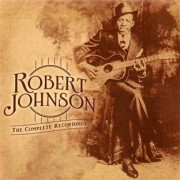
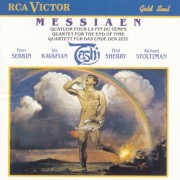
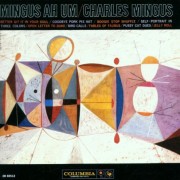
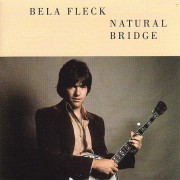
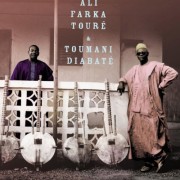
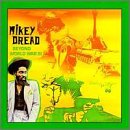
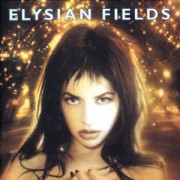
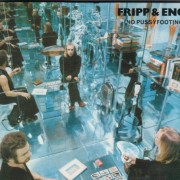
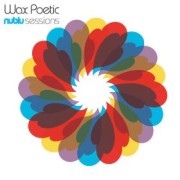
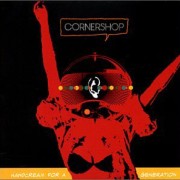

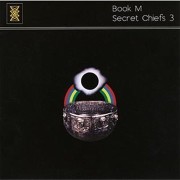
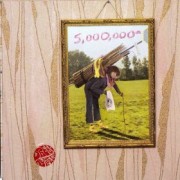
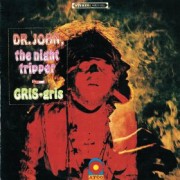
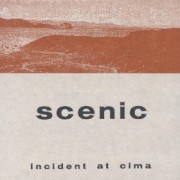
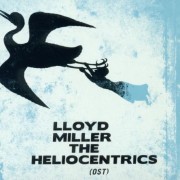
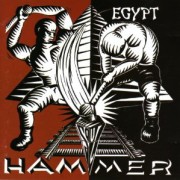
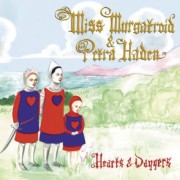
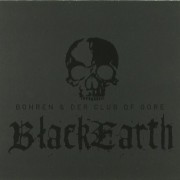
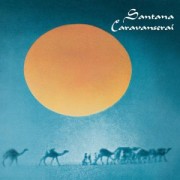
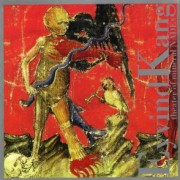
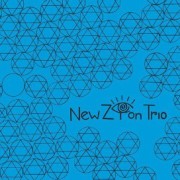
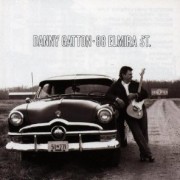
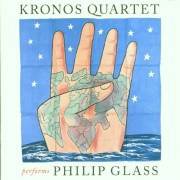
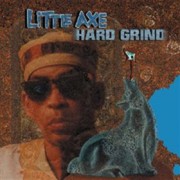
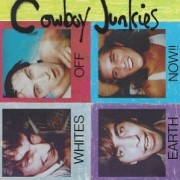
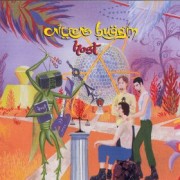
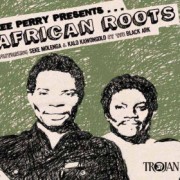
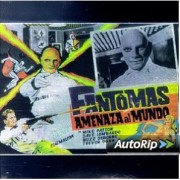
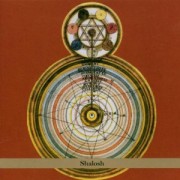
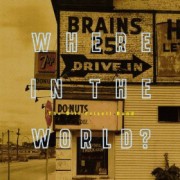
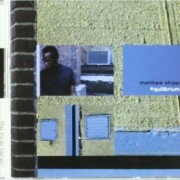
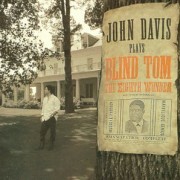
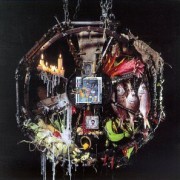
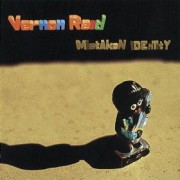
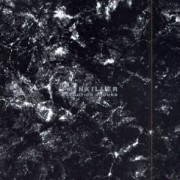
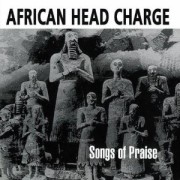
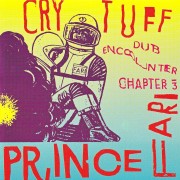
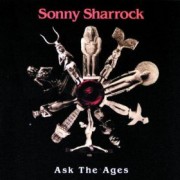
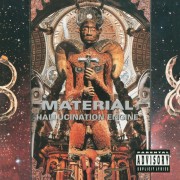
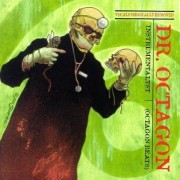
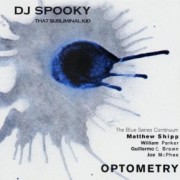
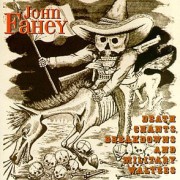
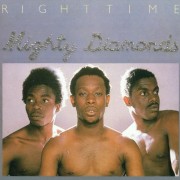
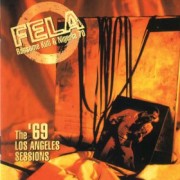
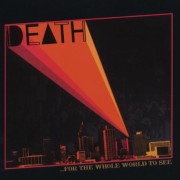
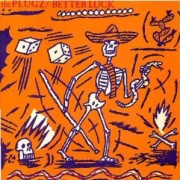
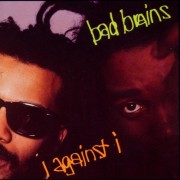
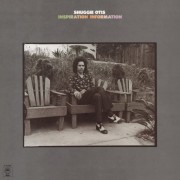


A most excellent and impressive list, Sean. I totally agree with the choices of Mingus, Ali Farka Toure, Mighty Diamonds (damn, love them!), Mikey Dread (would like to have seen Paton Banton, too, and maybe Sun Ra, but what category? Egyptian Space Jazz?), and Robert Johnson (pure, otherworldly genius). The others certainly peak my interest, and Caravanserai was the first album I ever bought with my own money — I think I was 7 at the time, and an album I wish I still owned. Thanks a bunch for this.
Jim,
My pleasure, 100%
Definitely a labor of love, but every single one of these albums/artists deserves more attention (and money!) so I hope people circulate the list for all the right reasons. I just picked up a vintage vinyl copy of ‘Caravanserai’ for less than $10; they’re out there, my friend!
Let me know if any of these that are new to you end up making you a fan for life.
re. our favorite Saturnian, a feature piece on Sun Ra has been in the works for a long time, and will drop one of these days.
Cheers!
Murph
day one, I’m 4 deep. 4 for 4. Tremendous list. I’m excited for the weeks ahead. This kind of thing takes time! well done. thank you.
Thanks, Scott! Glad you are digging it and feel free to let me know if anything I’ve suggested ends up speaking to you!
Cheers,
Murph
Pingback: 50 Albums You May Not Know…But Need To Own: Part One - Murphy's Law
Pingback: 50 Albums You May Not Know…But Need To Own: Part Two - Murphy's Law
Pingback: 50 Albums You May Not Know…But Need To Own: Part Three - Murphy's Law
Hello sir, many many thanks for this list. I was familiar with some of the artists, and their inclusion left no doubt as to your excellent musical taste. Tracking down the others and can’t wait to hear them. Keep up the outstandinf work.
PS just to contribute (sure you’re familiar with these), how about Faust: the Faust Tapes and The King and Eye by the Residents. Also, I really think Alice Coltrane’s solo albums are seriously underated…
Pingback: 50 Albums You May Not Know…But Need To Own: Part Four - Murphy's Law
Pingback: 50 Albums You May Not Know…But Need To Own: Part Five - Murphy's Law
As a visionary leader of luxury products, CHARRIOL offers an entire collection of jewelry, watches, and accessories all utilizing their signature stainless steel cable-inspired
motif. Going back to China, sunglasses were in use here around 12thcentury.
Color television sets emit more EMF than do black and
white sets, yet even the black and white TVs have been associated with 2.
Thanks so much for this list. I love listening to any/every kind of music and can’t get enough. Always in the back of my mind I think, “There’s so much out there – it never ends” but what I want to hear is the stuff that goes way out there but is still GOOD. Thank you for not excluding jazz. Jazz is what any musician graduates to. Great list, loving what I’ve already heard and looking forward to listening to the rest. I would suggest just one album: Log Bomb by Bob Log III. Give it a listen! And thanks again, great taste. “Love of beauty is taste. The creation of beauty is art.” – RW Emerson
Of course everyone reads a list like this and says, “…but what about__________?” So I’ll mention the one that has grown roots deep in my consciousness. Talk Talk – Spirit of Eden. Go listen.
No, don’t be ridiculous there’s far too many Jews on this list. No way am i about to give my money to them! I don’t need to know about these albums and I definitely do NOT need to own them!!! – The Hammer
Would you mind if I use your J. Fahey review verbatim on my ‘Lost Classic’ column on the Rock Pathology FB page (duly credited of course) the way you string your words is an inspiration to a rank amateur like me! Just trying to get good music to the uninitiated.
Finally a list that has been curated with dedication and heart. Thank you.
Have you ever tried all the dating apps and had no success? Listen, take in the knowledge and ask questions to prove that what you’ve heard is computing. “There are questions you possibly can ask that aren’t scary to kind of tease this out very early on,†says Nobile. Flowers are a bit of an previous-faculty romantic gesture, but if you really wish to know the perfect variety, then you should ask your date what their favourite flowers are. One threat of online dating is that you just won’t ever fully know someone unless you meet them. Set up boundaries not only for yourself but also for the individuals you meet and date on-line. “It’s important to essentially roll up your sleeves and date with intention. While it’s a very good transfer to point out your potential on-line date your best side, it’s additionally important to present them their probability, too. It’s onerous to do for some folks, and that’s Ok; nobody’s saying you need to eyeball the other individual the entire date.
Online dating typically requires you to communicate with different individuals you’ve never met in particular person and that is difficult. Give him [url=https://about.me/qpidnetwork]qpid[/url] the house he requires and keep wanting. But don’t surrender completely. Generally, you might come across profiles that don’t tell a lot in regards to the person or perhaps an image that isn’t very placing. I’d inform an embarrassing story about them. 2. Tell the reality – however don’t give them all the pieces. Of course, they may give a magazine an interview or address their followers straight via Instagram Dwell or Twitter, but Clubhouse presents them a platform to talk with fans and critics alike instantly. Of course, there are times when you might have to just be playful and casual, however if you need one thing severe to return out of your online dating expertise, then you know what to do. After all, you will have the selection to hide one thing about your self relating to online dating. It’s acceptable to say somebody from your past but if it’s the only thing that comes out of your mouth, it may be irritating and tiring. However like another device, social media work best when used correctly – especially in the case of dating.
Just a few individuals like having their dates at cafés, some like museums, and others would prefer a nice walk in the park. Dating sites are like venues on your dates. The days are gone when most individuals judge a lady who makes the primary move. Lengthy gone are the days of “but it really works on my machine!”. “Give yourself two or three days and then put it back in your calendar beginning on a Monday,†says Nobile. You don’t must disclose all the things, however the issues you set in your profile or the way you current yourself to different individuals should be true. In case you go on three not-so-nice dates, put yourself in an online dating timeout (however not for very lengthy). Then sort 480 characters (together with areas) into three lengthy texts explaining how the past three douches made me this fashion. Discord gives a good looking Slack-like interface with rich-text help together with photos, GIFs, videos, and information.
This implies she might really feel out of her ingredient; whatever you do, do not ignore her or assume she’ll determine it out on her own. Social media star Logan Paul has by no means been someone to keep his private life out of the general public eye. Based on The League’s app description, it’s a “dating group designed for the overly bold that know what they need and refuse to settle.†The app has an admissions-primarily based model where potential users can apply to join by submitting their social media profiles. The 2 tech giants have been battling it out in court after Match sued Google this will likely over its alleged monopoly energy in Android app payments. If you’re not comfortable or should you think you aren’t suitable with them, don’t be afraid to speak out. Whether you need to try to meet somebody on-line or you’re presently within the center of 1, these items of recommendation will surely assist you to out. It is best to also have an easy time studying evaluations of earlier customers to help you know more about the site and determine if it will meet your expectations.
Both manner, it’s better to know where you both stand. He had a superb sense of humour, he was handsome in a dorky sort of means, and he was very polite, asking me a great deal of questions about my family,’ she stated. Some examples might embrace values about politics, religion and spirituality, household, leisure time, or travel. Some boundaries include issues related to time, money, physical interactions, and communication. As a relationship recommendation columnist, I’ve 15 glorious online dating tips that can save you time, power, embarrassment, and the pain of sitting by way of long, drawn-out dates that leave you feeling deflated and depressed. As opposed to online dating businesses, the standard “offline” businesses often require clients to visit in person – and show three forms of ID. What do On-line and Offline Imply? †Relationship doesn’t imply it’s important to lose your self. Due to this, the transition to online dating isn’t at all times as easy or easy as people think.
Suppose about what features of the rejection felt most painful and why. The idea was that people who matched in terms of answers to persona questions, their appearance, their location, or different points of their daily lives would also be a superb match romantically. However maybe you’re clicking on all of the profiles, even those that don’t match your preferences, or sitting subsequent to your sister, and she’s also in search of a boyfriend – one who’s quick and blond. These app and online dating tips will set you up to have the best opportunity to meet someone that matches what you are in search of. However, she learns just a few suggestions to assist her make the most out of app and online dating. It’s important to have the best instruments and techniques to make the most out of your relationship experience. Relationships are much more expertise with another person than merely writing to them.
Rachel doesn’t currently have the constant expertise of assembly new folks, like when she was in school. MySpace. These networks are used for finding outdated mates and assembly new people. Schleien noticed that the pandemic had shifted dating behaviour, and never only did singles start to care more about quality over amount, however it also became the norm to video chat earlier than assembly up in individual. Somewhat, courting may be about finding a accomplice to share experiences with you. Some birds have their accomplice and a few desires to be a companion, those who wish to be they mustn’t worry because Datehookup is a tree the place one can find your excellent companion in free of value. Normal: I’m very active and need to find a partner who also enjoys the nice outdoors. Always keep in mind if a profile looks too good to be true (like a drop-lifeless gorgeous overseas dignitary who wants to find someone to sail around the globe on his or her dime), then it possible is.
With a view to make a true match with some one, you have to kind an emotional connection. Confidence and empathy form a number of the most vital characteristics of highly seductive men, which is outlined in my infographic beneath. There is no “right†or “wrong†approach to meet a companion. If you are feeling that someone is talking to you in a means that feels uncomfortable, attempt being open and assertive about the problem. A minimum of, that’s how she has always thought she should meet somebody. I thought that was a significant red flag,’ she said. She admitted there was one red flag at the tip of the night time which made the disappearing act a lot less shocking. Some women get 50 messages from males in one hour, Duggal stated. With so many options, Rachel thinks to herself, “How might I presumably know which one is finest for me? Moreover, Rachel has not had any luck finding somebody at work or when out with pals. Teasing somebody [url=https://onlinedatingtips.wixsite.com/chinesehotwomen/charmdate-scam]charmdate[/url] early on is a tad risky but in case you pull it off just right, it will probably really give you the results you want. Whether or not apps and web sites are used for long-term, short-time period, informal, or serious functions, app and online dating may be both exciting and annoying.
There are additionally an on the spot messenger and video chat characteristic, as well as choices for mailing blossoms and presents to your Ukrainian match. But since Russia’s invasion on 24 February, of the more than 2.5 million folks who have entered Poland, about 502,000 are estimated to have returned. Because of an open call, representatives of Docudays UA, the Ukrainian Institute and Sheffield DocFest have chosen three movies which will take part in the Works-in-Progress event and join a pitching training. On the time you be part of a Ukrainian dating web page, you will be fortunately stunned at how rapidly issues study to occur. It’s also possible to use a digital actuality dating net web page to satisfy females in actual life. Regardless of where you’re planning to seek for a Ukrainian lady, on European relationship websites or offline, following these easy recommendations will be helpful if you want to win her attention. Giving gifts no matter how small reveals that you simply care about her. When she chooses a man, she respects her choice and can stay with you no matter what. Thus, you may interact physically, which can permit you to match relationships with Ukrainian and Western ladies.
Thus, you could find a perfect lady to build a critical connection with. Since June 10, tens of thousands of spam emails promoting good matches between men and beautiful Ukrainian women focused the inboxes of customers from throughout the globe. For this reason confusing Russian and Ukrainian women is a large faux pas during courtship. Why not so far a Ukrainian hot babe, look via these profiles and learn the way good Ukrainian women are. That is why if you’re looking out for somebody special, it’s possible you’ll have to learn the particularities of ladies primarily based on the realm they stay in. Her mother and father want her care in jap Ukraine, she says, although she is anxious to return to Poland. After these credits expire, you want to buy extra to continue utilizing the web site. Additionally, they like that Western males are more bold and determined than native grooms. She’ll even be fascinated about a guy who’s extra suitable than she is. In contrast to American ladies, native females don’t mind the social and monetary status of their vital others. Relying on the area, [url=https://www.love-sites.com/ukrainian-women-do-this-when-they-really-like-someone/]ukrainian women[/url] Ukrainian women might have totally different traditions, values, social tendencies, and even appearances. For men, the journey could also be a vital one, after Ukraine conscripted males aged 18-60 to fight.
For this, it is critical to use for a K1 (fiancé) visa and prove your relationship. There’s no better method to start a relationship with a Ukrainian girl than online! Check the VIP coaching program for men courting Ukrainian women It provides step-by-step advice on building a relationship that may stand the check of time. However, in the event you calculate how a lot time and money it takes to meet brides in actual life. In any case, then day by day will likely be filled with new emotions, constructive, want and love with certainly one of the hot Ukrainian brides or Russian brides. The easiest way to find the Ukrainian Brides – at the legit site. Vice News reported a Chinese language dating site specializing in matchmaking with Japanese European women additionally noticed curiosity in Ukrainian women double since the beginning of the Russian invasion. However don’t ship something by the dating websites – give presents in person or ask for her address and ship gifts by courier. We are all totally different, but there’s all the time a person who’s ready to fully perceive you. Are you truly prepared up to now and marry a Ukrainian woman? How up to now a Ukrainian girl to win her coronary heart?
Simply keep in mind that you ought to be nicely intentioned and considerate female particular date. The number of male profiles remains to be comparatively small in comparison with the female profiles. You’ll be able to spend a small service cost to acquire entry to their repository, nonetheless a free account permits you unlimited contact. Ladies of this nationality are normally very ambitious and can boast of many goals and achievements. So, if you are a artistic and plenty of-sided person, you are possible to seek out common floor with a girl of this nationality in a short time. Was it ever really easy to find a worthy girl? If you’re searching for a woman who is aware of the right way to take care of her man and who isn’t afraid to let him take the lead, then dating a Ukrainian girl is right up your alley. If you’re in search of a woman who can take care of you both in and out of the kitchen, then look no additional than a Ukrainian lady. Look by way of some elements that affect the appearance of these Slavic ladies to ensure that your Ukrainian girlfriend will shine like a diamond beside you. These ladies are wanting to create a family and to start out relationships. Make-up, good clothing, excellent hairstyle-these ladies are champions in caring for themselves.